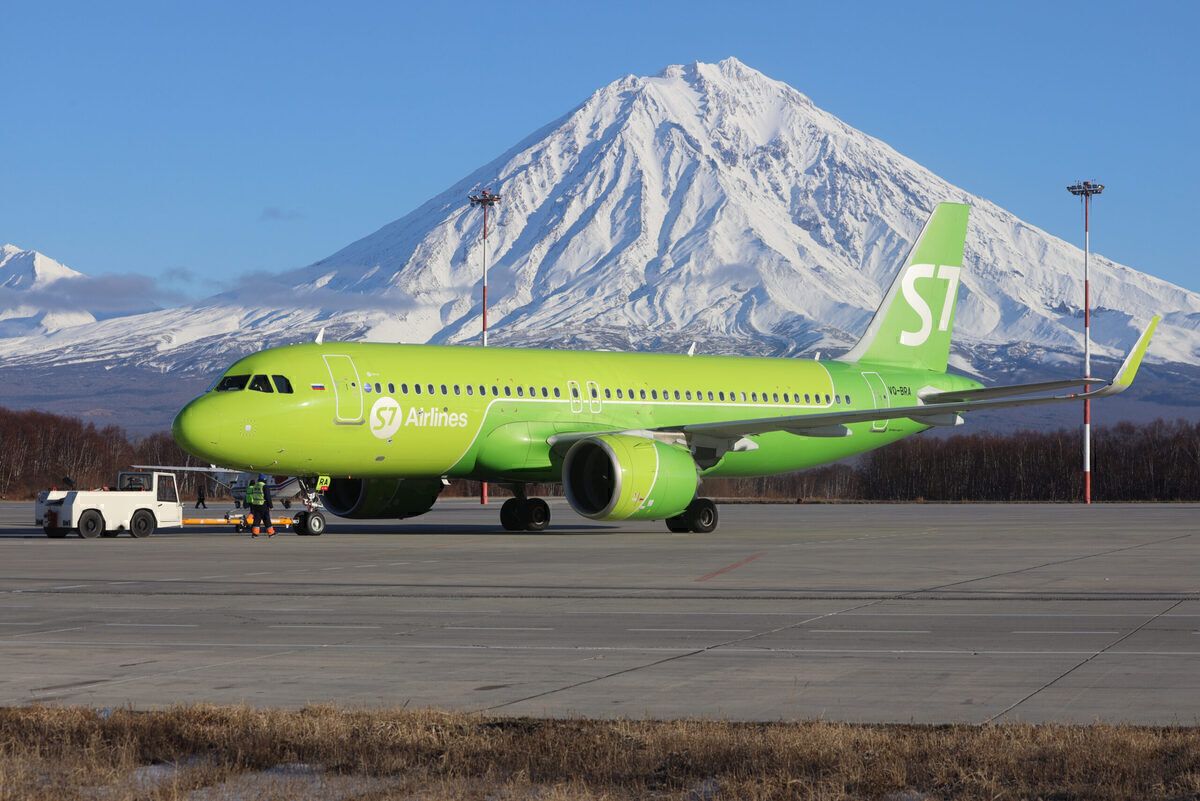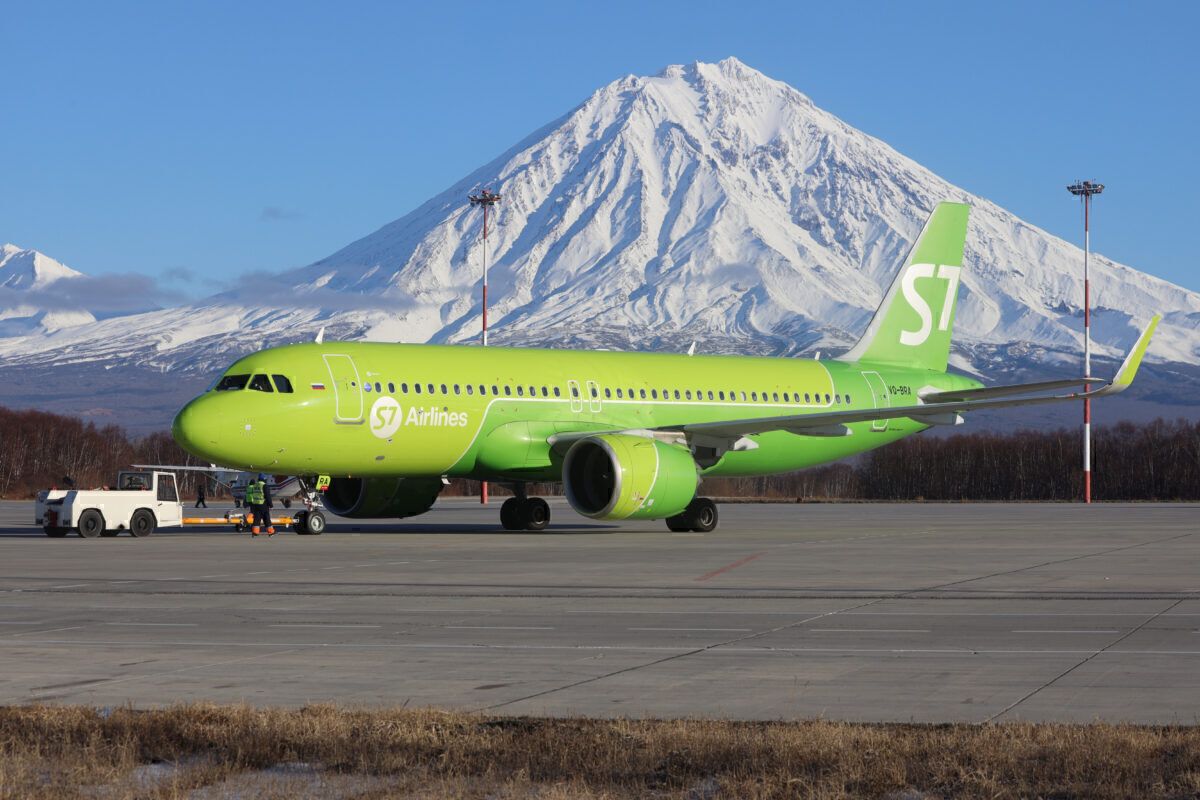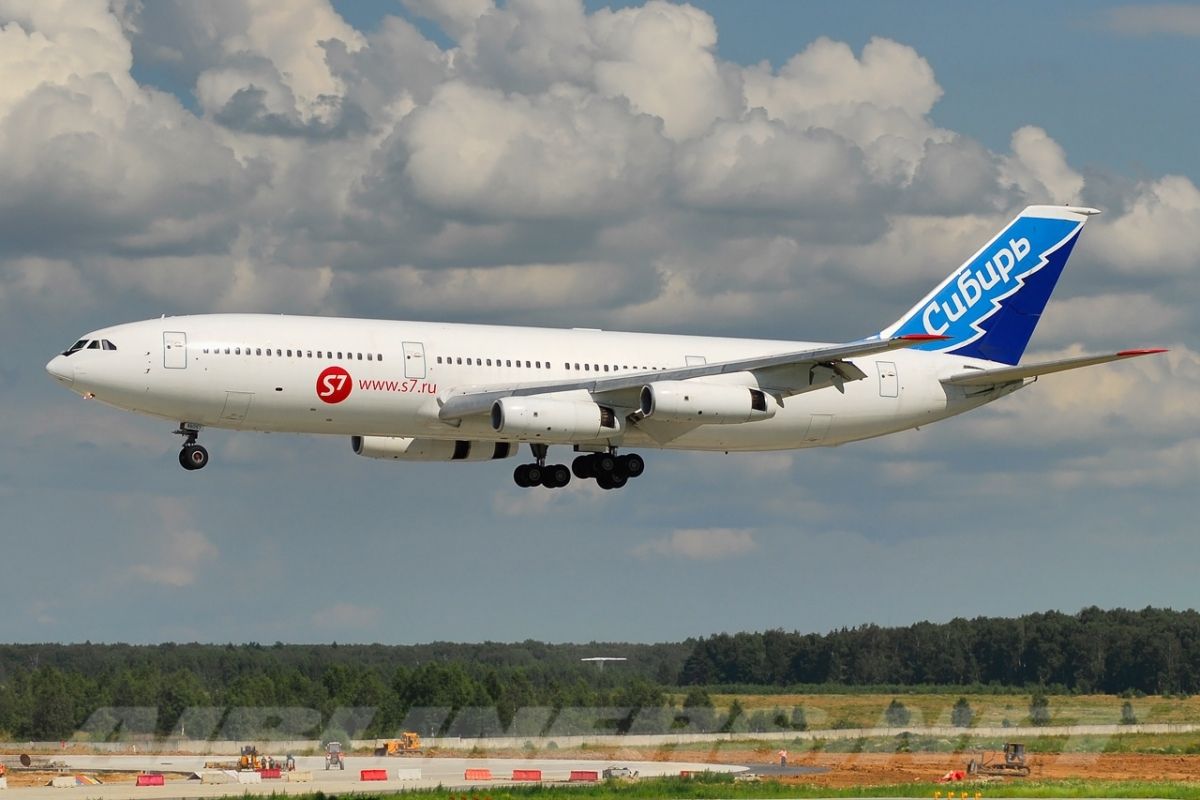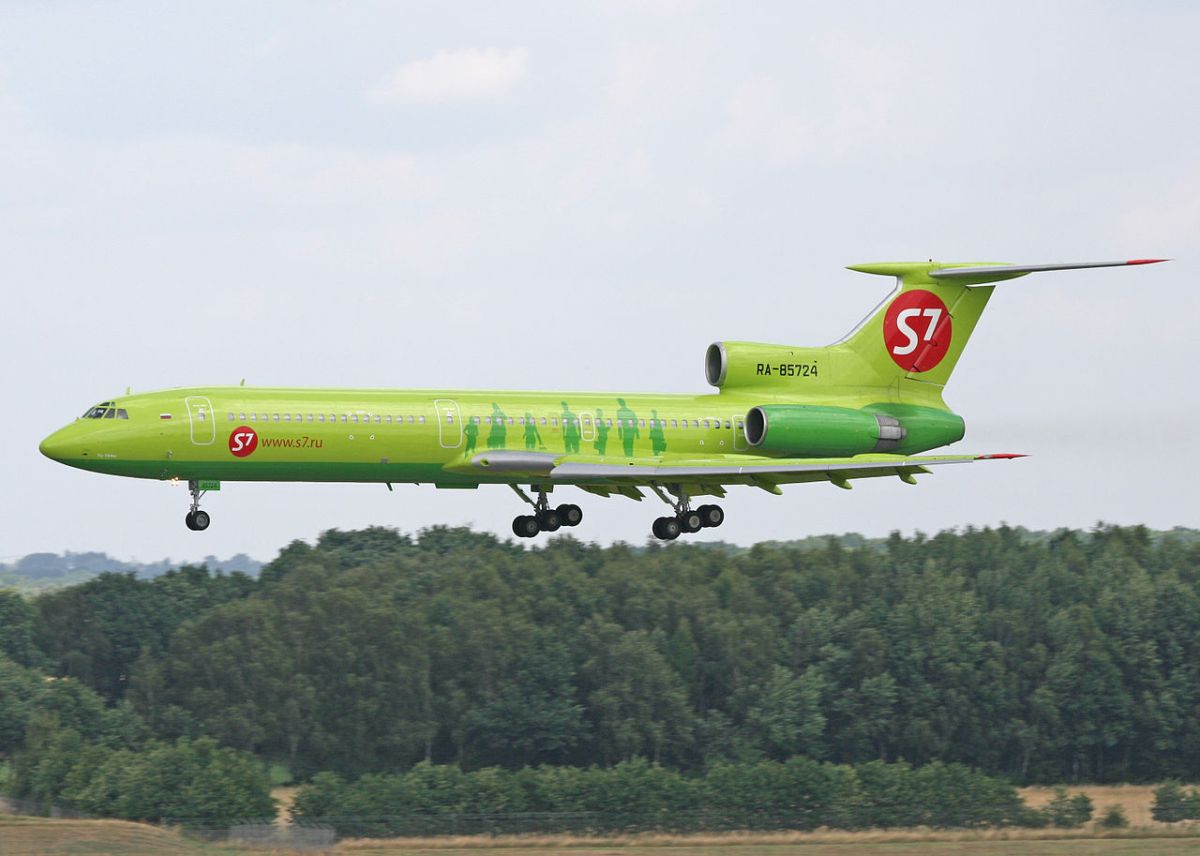Starting life in 1957 as the Tolmachevo united squadron of the General Directorate of Civil Aviation of the Soviet Union, S7 airlines has operated a fleet of Antonov, Tupolev., Airbus, and Boeing aircraft. Following the break up of the Soviet Union in the 1990s, Siberia Airlines was created and then later privatized in 1994. In 2001, Siberia Airlines absorbed Baikal Airlines and inherited several Antonov An-24, Antonov An-26, and Tupolev Tu-154 aircraft.
While operating a fleet comprised of all Russian/Soviet manufactured aircraft, the Ob, Novosibirsk Oblast-headquartered airlines took delivery of its first of nine Airbus A310-200 and A310-300 aircraft in 2004. During the 2004 Farnborough Air Show, Siberia Airlines placed an order with Sukhoi to acquire 50 Sukhoi Superjet 100s. However, the delivery of the planes never happened following S7 canceling the purchase, saying that the plane no longer met its requirements.
Siberia Airlines rebranded in 2005 to become S7 Airlines
A year later, in 2005, Siberia Airlines rebranded itself to become S7 Airlines, and not long after, began publishing its fares in euros rather than dollars for international destinations that originated in Russia. In December 2006, S7 became the second Russian airline to complete and pass the IATA Operational Safety Audit. S7 Airlines became a member of the oneworld alliance in 2010 and today operates a modern fleet of 104 aircraft.
S7 Airlines historic fleet
According to aviation statistics and data website ch-aviation S7 Airlines historic fleet comprised the following aircraft:
8 x Yak-42D
2 x Tu-204-100
34 x Tu-154M
14 x Tu-154B
1 x Tu-134A-3
14 x Il-86
2 x Boeing 767-300(ER)
10 x Boeing 737-500
2 x Boeing 737-400
5 x Airbus A310-200
4 x Airbus A310-300
While ch-aviation has no record of it, we know that S7 airlines or Siberia Airlines operated several Antonov An-24s.
Get your boarding pass to the flight of the year. The Future Flying Forum is taking off soon!
About the historic fleet
Yak-42
The Yakovlev Yak-42 is a 100/120-seat three-engined mid-range passenger jet powered by modern high-bypass turbofan engines.
Tupolev Tu-204
First introduced in 1989, the Tupolev Tu-204 was designed to compete with Boeing's 757. The Tupolev Tu-204 is a twin-engined medium-range narrowbody jet airliner capable of carrying 210 passengers.
Tu-154
Designed in the mid-1960s, the Tupolev Tu-154 was built to replace Aeroflot's Tu-104s and the Antonov An-10 and Ilyushin Il-18 turboprops. Similar in many ways to the Boeing 727, the Tu-154 was a workhorse for several Russian and East Bloc airlines.
Tupolev Tu-134
Built between 1966 and 1989, the Tupolev Tu-134 is a twin-engined, narrowbody jet with a reputation for its reliability and efficiency.
Ilyushin Il-86
Credited with being the Soviet Union's first widebody aircraft, the Ilyushin Il-86 is a short to medium four-engine jet capable of transporting 350 passengers in a single-class configuration.
Boeing 767
The most popular variant of the Boeing 767, the 767-300ER, was the aircraft that led boing to develop and build the Boeing 777.
Boeing 737-400
Launched in 1985 to compete with the Airbus A320 and the McDonnell Douglas MD-80, the Boeing 737-400 could carry as many as 188 passengers. The Boeing 737-800 that we all fly today was designed to replace the Boeing 737-400.
Boeing 737-500
Capable of carrying 132 passengers, the Boeing 737-500 is a twin-engined short-to-medium-range narrowbody airliner built to be a modern and direct replacement of the 737-200.
Airbus A310
Built after airlines asked for an aircraft smaller than the Airbus A300, the Airbus A310 competed with the Boeing 767-200. Capable of carrying 220 passengers in two classes, or 240 in a single class configuration, the main difference with the 300 models was that the latter had a greater takeoff weight.
Have you ever flown with S7 Airlines? If so, please tell us what you think about them in the comments.




